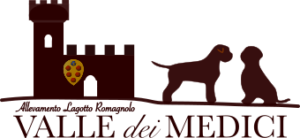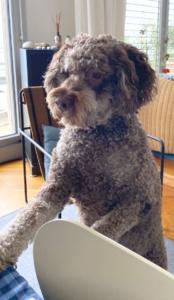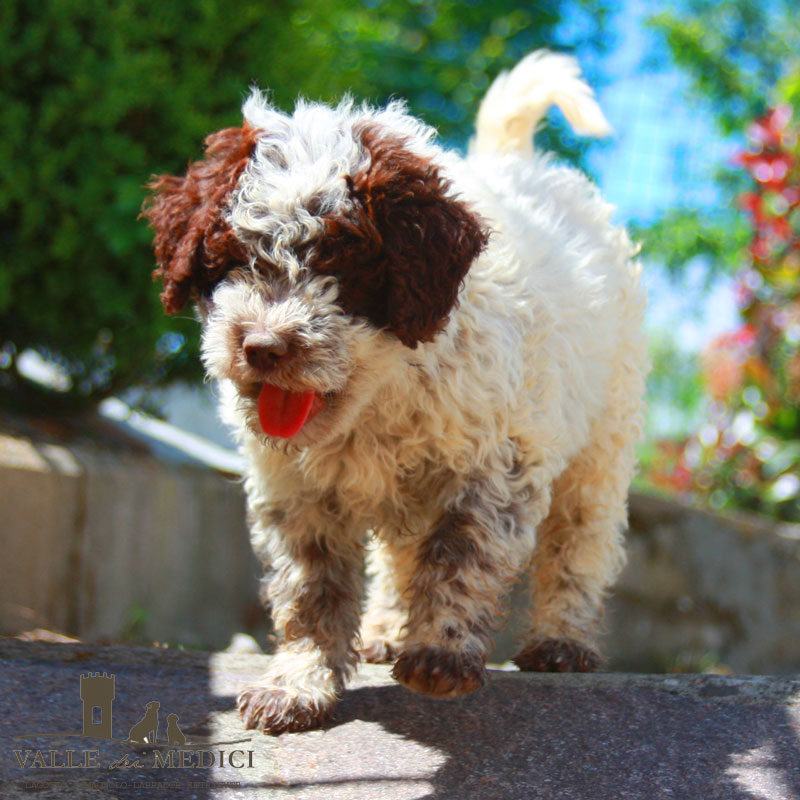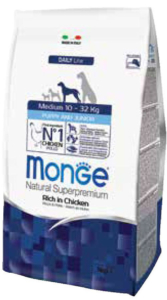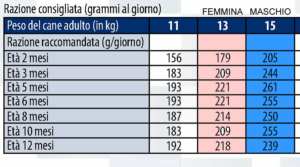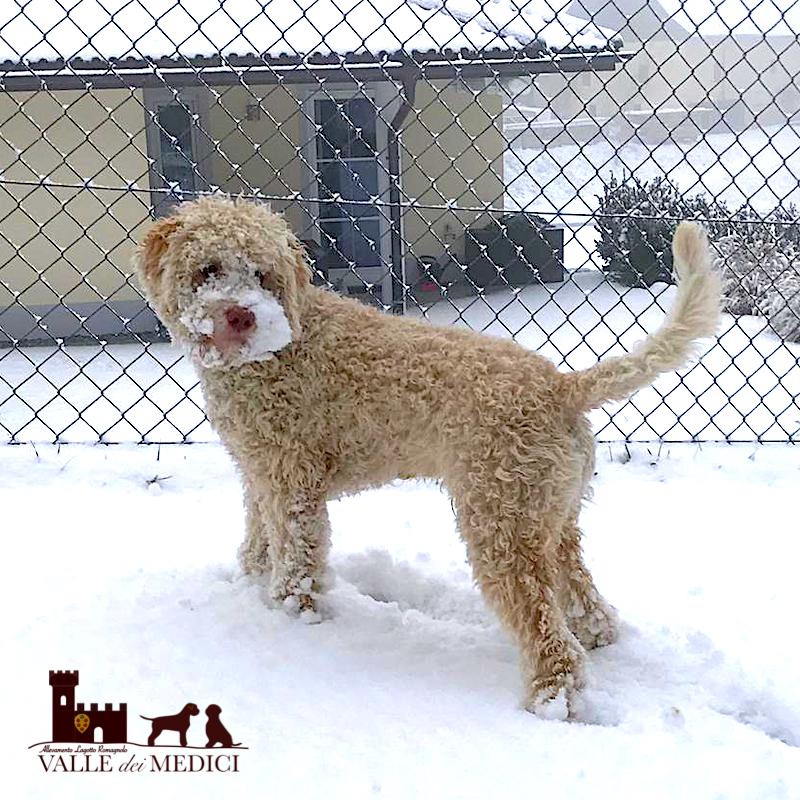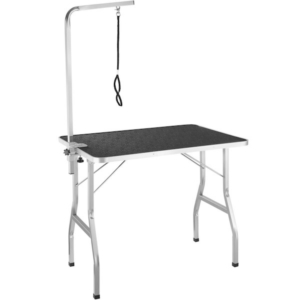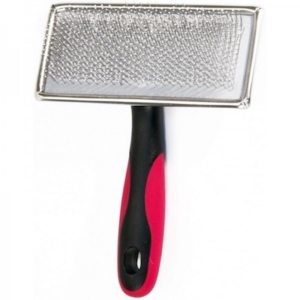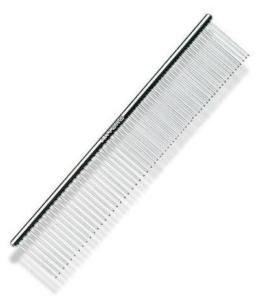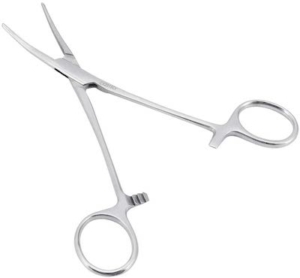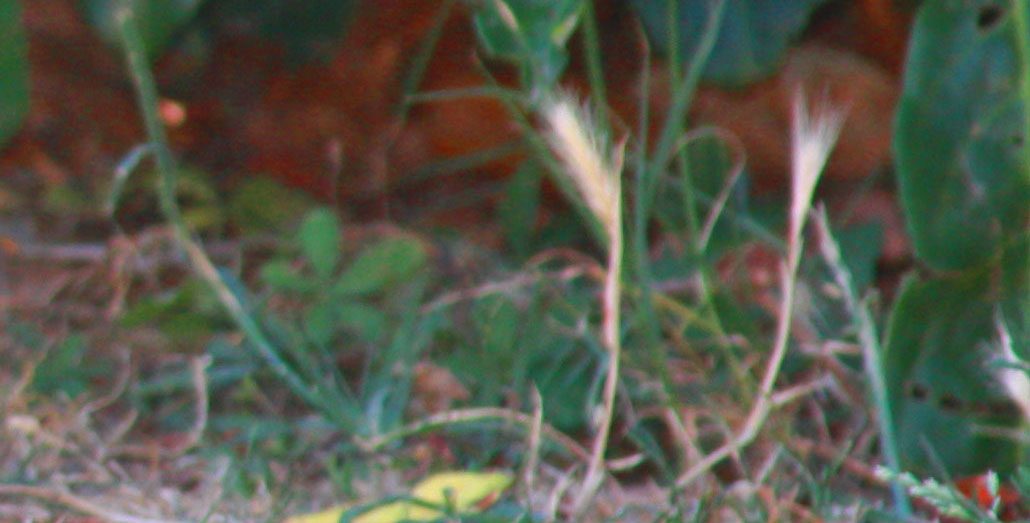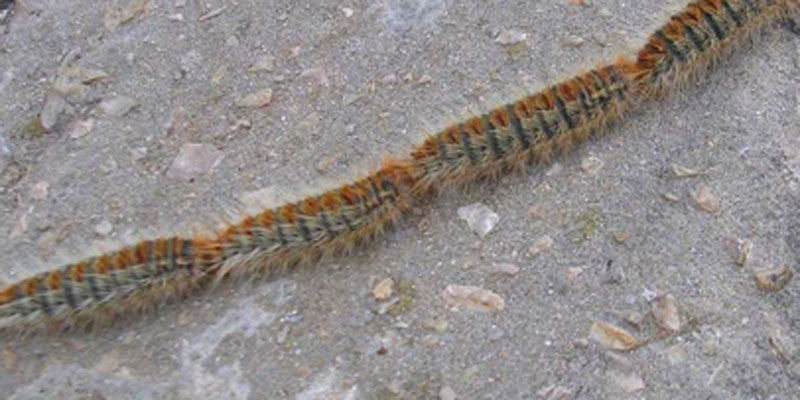Lagotto Romagnolo puppy booking | Breeder Valle dei Medici.
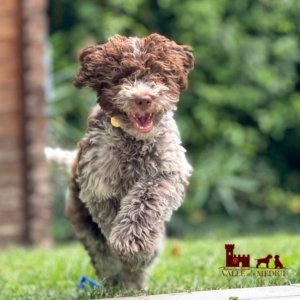
Reserving one of our puppies, especially made without making a visit with us is definitely an act of mutual trust.
The inability to make a visit is often due to distance. However, a good friendly phone conversation, sometimes a video call allows us to exchange useful information to understand the family’s expectation of the new puppy.
We are able to make clear what we do here and what health and socialization aspects we follow with the highest attention.
The price of one of our puppies is intentionally not listed on this site. We also do not give the price by email or whatsapp.
The reason for this choice is not a marketing operation or an inexplicable strategy.
We fully understand that puppy price is an important piece of information, but it only comes into play after we feel that our contact person is suitable for one of our Lagotto puppies.
We want to have information about our puppy’s new family. We want to be able to have our say and do the best we are allowed for the future well-being of our puppies, the children of our Lagottos.
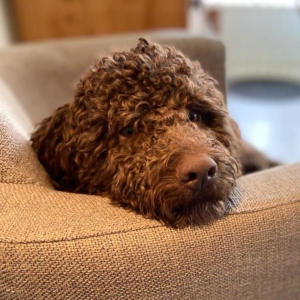
So avoid superficial buyers who by asking themselves few questions about their situation and ability to take in a dog decide they have that budget for the puppy and if the price is right they think “the deal” is done.
well understand what I mean, the many people who write to us about their family or call us to inquire precisely about the aspects that lead to the adoption of a puppy.
Those who book the puppy will certainly have to wait some time to have it in their home, on the other hand it gives us useful information to evaluate îthe temperament of the puppy for that specific family throughout the growing up period here with us.
How we make the puppy choice.
Puppy choice occurs around the 50th day of life.
The main goal is to identify dominant and more closed puppies.
Every day we evaluate their behavior. When they are the right age they are taken individually and offered new things.
And then, the puppy who together with his siblings was playing devil’s advocate, taken on his own is very shy.
Testing is not done once. Even for puppies, not every day is the same.
The Lagotto’s natural reserve in facing new situations should never result in fear.
Puppies that require more attention and care will need to receive it here with us in order to be ready when they have to leave us and face placement elsewhere with other people.
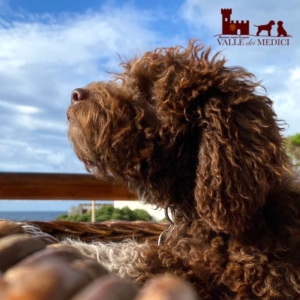 We are often told that the previous dog was the one who first approached, or we are asked precisely to do this test with our puppies to leave the evaluation to the future owner. We don’t.
We are often told that the previous dog was the one who first approached, or we are asked precisely to do this test with our puppies to leave the evaluation to the future owner. We don’t.
This unfortunately takes away some of the romance aspect of the choice, but we know that a puppy who remains somewhat secluded at that time may simply have eaten more than his siblings and be in a moment of digestion. He may simply have played a lot before these people arrived and not feel like doing anything else.
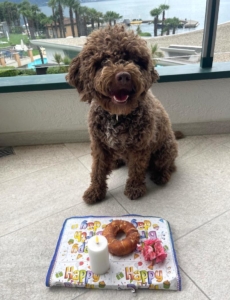 In any case, it often happens that when the puppies are already about 45 days old we agree to do a trial together with the future family. It will be three or four puppies, generally either all male or all female if the family has clear ideas about the sex of the future puppy. With our supervision and choosing puppies that we feel are suitable for the future situation we accommodate preferences and leave the romantic aspect of… “he chose us!”
In any case, it often happens that when the puppies are already about 45 days old we agree to do a trial together with the future family. It will be three or four puppies, generally either all male or all female if the family has clear ideas about the sex of the future puppy. With our supervision and choosing puppies that we feel are suitable for the future situation we accommodate preferences and leave the romantic aspect of… “he chose us!”
A more open or more closed temperament can be a plus in one situation and a flaw in another.
